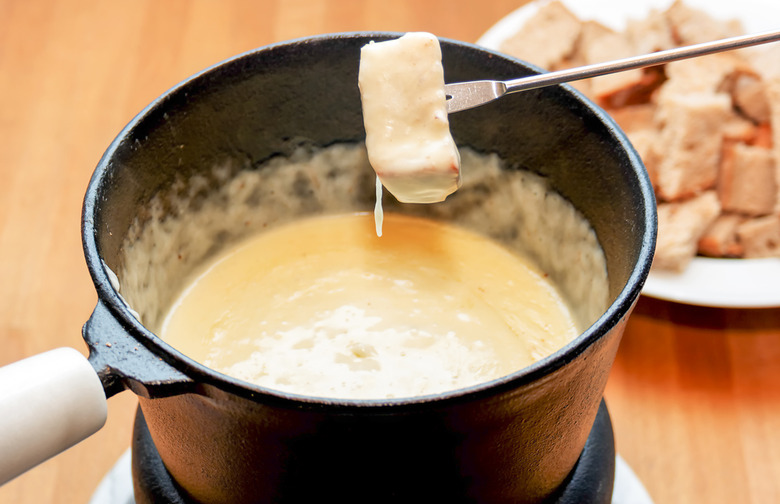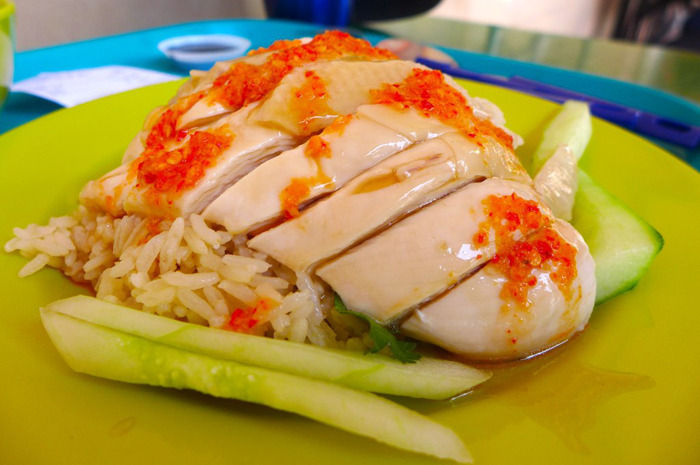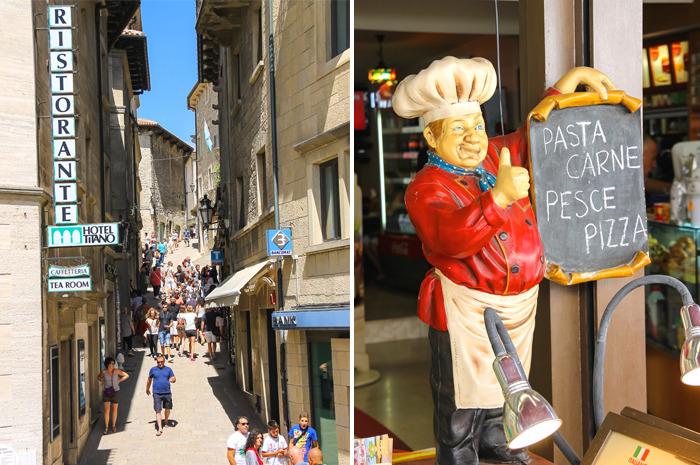What Do People Eat In Countries With The Longest Life Expectancies?
At the global level, both male and female life expectancies have increased by six years since 1990, with gains recorded across all income groups.
Canada: 82
It may be surprising to see Canada on this list: after all, gobbling up poutine is a national pastime. A survey entitled Overview of Canadians' Eating Habits, conducted in 2004, asked more than 35,000 people to recall what they had eaten during the previous 24 hours. Results show that "Canadians were generally within acceptable ranges for the number of servings from the four major food groups and for the percentage of calories from fat, protein and carbohydrates"; however, despite these findings, the Canadian diet is lacking in fruits and vegetables.
Sweden: 82
Maybe it's all that surströmming they're eating, but there is a reason the new Nordic food movement has gained momentum around the world. Nordic food largely stems from the Scandinavian countries of Sweden, Denmark, Finland, Iceland, and Norway. The new Nordic diet — Scandinavia's answer to the Mediterranean diet — calls for eating more plants sourced from the wild, seafood — like fish, shellfish, and seaweed — whole grains, fruits, and vegetables . When it comes to red meat, the new Nordic diets calls for restraint, but recommends a moderate amount of high-quality, lean red meat. According to a Vogue article, "a typical week's dinners in a [Nordic diet] might include three meat, two seafood, and two vegetarian meals, but, on any given day, you can eat as many as you like, within reason, of root vegetables, leafy greens, nuts and berries, legumes, and orchard fruits, all of them local and in season, and whole grains such as rye, spelt, oats, and barley."
Iceland: 82
Like its sister Scandinavian country of Sweden, Iceland also operates on the Nordic diet, which is said to have expansive health benefits: it may regulate cholesterol and reduce the risk of developing cardiovascular disease. Last year, Iceland was said to have the world's healthiest diet in a documentary produced by Channel 4 in the UK. In the film, leading nutritionists and dietitians ranked various countries' diets based on weekly groceries, typical meals, and common snacks. In Iceland, visitors will find foods in their most pure and raw form, due to the country's geography as well as governmental red tape that helps safeguard the environment. Icelandic people are lamb lovers, and Icelandic meat is said to be among the least fatty in the world. Come the warmer weather, lambs feed off the plants found in the country's hillsides and mountains; in addition, lamb is slaughtered at six months instead of 11, making the meat leaner. Aside from lamb, Icelanders also consume a great amount of fish, including haddock, carpelin, herring, cod, lobsters, clams, shrimp, and Arctic char — similar to salmon and rich in Omega -3's. Hákarl is also a much-loved dish in Iceland, although both Anthony Bourdain and Andrew Zimmern could barely stomach it. Icelandic people also eat a tremendous amount of fruit and root vegetables, like potatoes and beets.
Italy: 83
We know what you're thinking: with all that pizza and pasta, how is it that Italians maintain a healthy diet? The answer is simple: it's all about balance, quality, and leisure eating. Italian food falls under the umbrella of Mediterranean cuisine, which places a focus on natural, seasonal ingredients. According to famed Italian chef Gino D'Acampo, Italians eat smaller portion sizes, incorporate olive oil into their cooking, and enjoy a diet rich in fruits, vegetables, bread, rice, beans, nuts, and, of course, pasta. However, Italians are careful to eat their pasta al dente, or firm. Why? D'Acampo says that pasta al dente has a lower glycemic index than soft pasta and it keeps you feeling fuller longer. Additionally, Italians absorb most of their protein from seafood and fish: they try to incorporate at least two portions of fish into their diets each week. Italians limit their intake of meat, full-fat dairy products, and eggs, and they also use salt sparingly.
Andorra: 83
Nestled between the mountains of France and Spain sits Andorra, a "micro-country" set high in the Pyrenees. A combination of fresh mountain air, a low-stress lifestyle, diet, and nutrition are the secret behind Andorrans' longevity. Given its location, Andorran cuisine draws influences from both France and Spain. Andorrans get their nutrition from fish, fresh vegetables, and lean meats — most commonly locally-raised lamb — most of which comes from neighboring countries.
Switzerland: 83
A chocolate a day keeps the doctor away must be the motto for the Swiss. Or maybe it's a cut of cheese? Either way, the Swiss diet is clearly working. Swiss cuisine draws influences from France, Germany, and Italy, and the diet here relies on high-quality, fresh ingredients. We can thank the Swiss for Bircher muesli, a staple in the Swiss diet, as is yogurt, cheese, fish — particularly lake fish —, eggs, and whole wheat breads. Recently, the Swiss diet also made headlines for its inclusion of cat and dog meat.
Australia: 83
This is a meat lover's country if there ever was one: Australians love their red meat (and their meat pies). Oddly enough, despite Australian longevity, the Aussie diet isn't necessarily a health-conscious one. According to a 2011 survey administered that detailed the weekly eating habits of Australians, beef is the main source of protein in the typical Aussie diet, followed by fish, then pork. Australians are also reported to include a fair amount of fresh vegetables and fruits into their weekly diets. Aussies love to eat natural yogurt, potato chips, and vegemite, among other foods; however, according to The Australian Dietary Guidelines, Australians are eating too many starchy vegetables, refined cereals, dairy foods with high fat content, red meat, and foods and drinks that are high in saturated fat, added sugar, added salt, and alcohol.
Singapore: 83
Food is a national pastime in this country, and it has long been one of the must-visit destinations for culinary travelers the world over. Singaporean cuisine is incredibly diverse, with Chinese, Indian, Malay, and a host of other influences. The Health Promotion Board of the Singaporean government recommends five to seven servings of brown rice and whole-meal bread daily; two servings of fruit daily; two servings of vegetables daily; and two to three servings of meat, fish, and chicken, among other sources of protein. Yet Singapore is also incredibly famous for its street food, with hawker stands playing a dominant role in the country's culinary scene, and, given the cheap prices, many tend to eat out a lot. In Singapore, rice, noodles, and seafood — especially shrimp and crab — are daily staples that are as much a part of any meal as a healthy serving of vegetables. Common dishes include chicken rice, char kway teow, chili crab, and sambal stingray. You'll also find that Singaporeans incorporate a lot of fruit into their diet, with sweet durian fruit the most coveted of all. Singaporeans also eat jackfruit (considered part of the solution to world hunger), lychees, mangosteen, and other fruits found across Southeast Asia.
San Marino: 83
One of the world's smallest countries, San Marino is a landlocked nation in Italy. Given its location, the diet of those in San Marino is very similar to that of Italy and is overall reflective of the Mediterranean diet. You'll find a balance of fruits, vegetables, whole grains, legumes, nuts, fish, and poultry. Two of the most common foods here are pasta and piada, an Italian flatbread. Just like in Italy, the people in San Marino also cook using olive oil.
Japan: 84
Sushi isn't the only thing that the Japanese eat. According to Harley Pasternak, celebrity trainer and nutritionist, the Japanese diet places a heavy emphasis on vegetables like bok choy, kale, and a tremendous variety of seaweeds. Japanese turn to fish and soy as their main sources of protein, and their complex carbs come from buckwheat noodles or soba noodles, which are fat free, cholesterol-free and rich in manganese, lean protein, carbohydrates and thiamine. In addition, the traditional Okinawan diet (eaten by the indigenous people on the Japanese island of Okinawa, where life expectancy is among the longest and healthiest on Earth), has long gained attention for its health benefits: it's low in calories, but rich with nutrients. This diet incorporates lots of yellow and green vegetables, less rice and animal protein than most Japanese eat, and has as its staple a purple-fleshed sweet potatoes. It calls for very limited consumption of meat, refined grains, sugar, salt, and full-fat dairy products.










